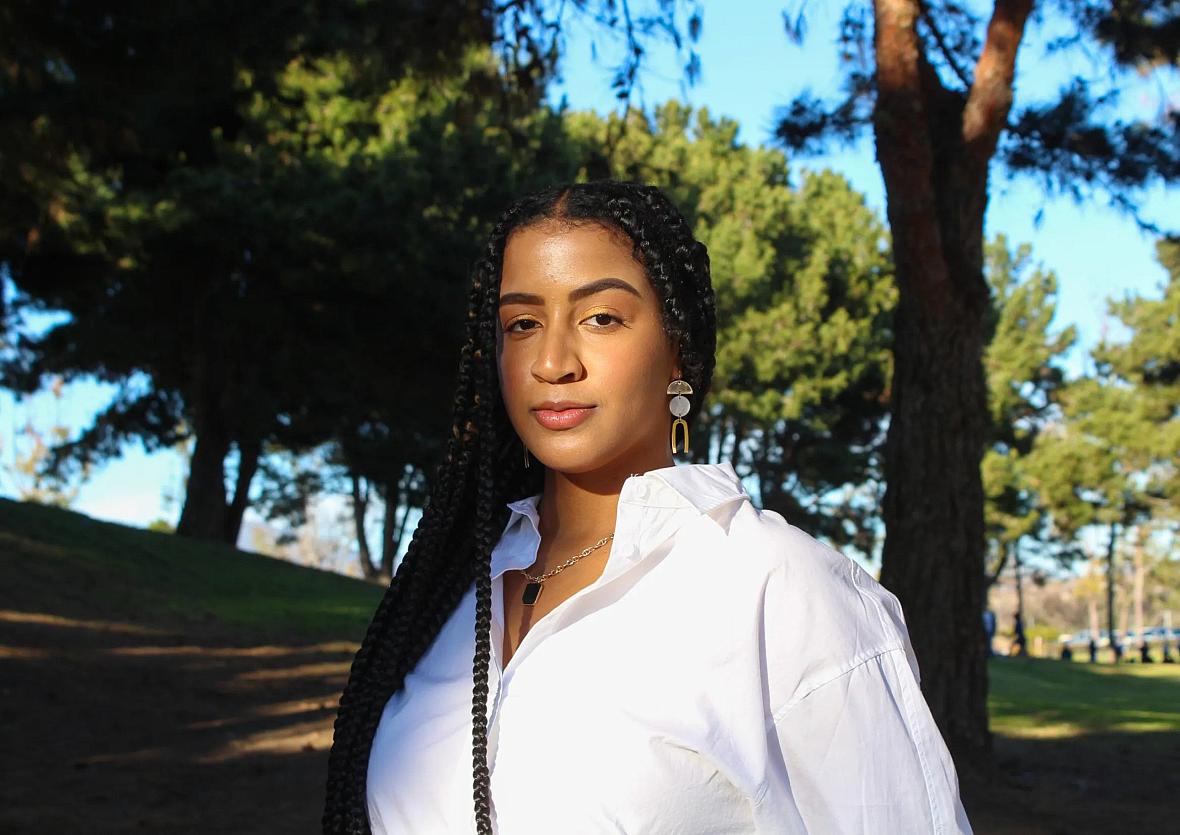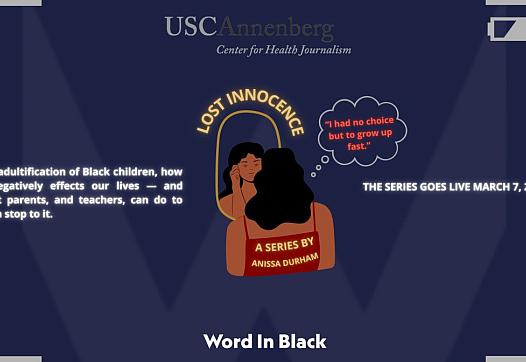Reporter’s Notebook: The Uncomfortable Truths I Uncovered About Black Childhood
The story was originally published in Word in Black with support from the USC Annenberg Center for Health Journalism’s 2022 Data Fellowship.

Anissa Durham poses for a portrait photo on March 9, 2023.
Photo by Trenae Tillery.
I wrote this series — Lost Innocence: The Adultification of Black Children — for Black children.
Childhood is the most formative, and important time of someone’s life. But the way Black children are rarely granted innocence, grace, or allowed to experience joy doesn’t sit right with me. And it shouldn’t sit right with you either.
My goal is to help people to see the lifelong impacts of robbing a Black child of their innocence. As a collective, when our kids aren’t allowed to be kids, we all suffer.
I realize I can’t change the world, or even the overall perception people have of Black children, but I can amplify our voices and experiences. And, I can share the stories that many of you relate to but may not have had the language for.
I remember the first time I experienced adultification bias. I was 13 when an adult male I was acquainted with began sexualizing my body. This went on for several years, and it wasn’t until the police were involved that I realized something was wrong.
In my opinion, every Black person has experienced being adultified. Unfortunately, it’s in the fabric of our culture — but shifting the narrative is possible. And it starts with each of us. In this reporter’s notebook, I’m going to take you through my reporting process, the challenges I faced, and how each of us can stop adultifying our Black children.
Reporting Process
In September of last year, I was accepted into USC’s reporting health and data fellowship program. I traveled to Los Angeles in October for an intensive four-day data training.
About two months into the reporting, I decided to create a short survey. The goal was to gauge what kinds of childhood experiences Black folks were having and see who was willing to go on the record.
I titled the survey: Are young Black bodies treated, viewed, or seen differently than others? I asked people less than a dozen questions ranging from if adults labeled them as fast, curvy, or promiscuous to if an adult has ever treated them older than their age.
40 people responded. With half willing to go on the record. The purpose of the survey was to find sources. And I did.
I interviewed six people from the survey. I emailed more than a dozen researchers who studied adultification bias or anti-Black racism. And, I contacted advocates who could talk to me about the Black youth experience. Of that group of people, I had Zoom conversations with seven.
During the interview process, I started to outline how I planned to write each of the stories.
Mental Health Toll
This series was the hardest thing I’ve reported on — so far.
I spent months conducting interviews, doing research, requesting data, and writing. By far, the most mentally draining part was conducting the interviews. I knew going into this project, I was going to have difficult conversations. But I didn’t expect the toll it was going to have on me.
For weeks, I heard some of the worst things that have happened to people.
Molestation. Rape. Suicidal thoughts. Self-harm. Suicide attempts. Life and death situations. Police encounters. Anxiety. Depression. Abuse.
For months, I felt like a therapist. And to a degree, I was.
Sometimes readers forget there is a reporter behind these stories. I was listening to traumatic events, condensing the story to its most important parts, and writing it into an article that is readable to the public.
I struggled with sleepless nights, panic attacks, and bouts of anxiety. The mental health toll some of these stories had on me often hit home. And I’m not going to pretend like it was easy.
Despite all of this, I am incredibly grateful and honored that so many people would share their deeply personal stories with me.
Getting the Data
One of the most continuous challenges I had throughout this project was acquiring the data. A critical component of each of these stories is to include data that supports the ways Black children are adultified. There were a handful of data sets I was able to use. But, there was one data set I struggled to get my hands on.
The California Department of Education produces the California Healthy Kids Survey every couple of years. In that survey, they asked high school students throughout the state “During the past 12 months, how many times on school property have you… had sexual jokes, comments, or gestures made to you?”
In October of last year, I requested a race and gender breakdown of every student who answered this question in the state of California. To this day, I have yet to receive this data. I filed a PRA, contacted the director of this survey, contacted the regional technical advisor, and called CDE dozens of times.
This effort spanned more than five months. And as of March, I still have not received my request.
The goal of this data is to analyze how often Black students answered this question. And how often they experienced sexual jokes, comments, or gestures in comparison to non-Black students.
Series Goal
One thing that is painstakingly apparent is, I cannot change how people view Black children and youth. But, my goal for parents, teachers, and adults who comes across this series is to think critically about their own view of Black children.
Ask yourself if you think Black children deserve a childhood. Should Black children be sexualized for their bodies and clothing? Is it appropriate to expect and treat a Black child like an adult? Do Black children deserve to be treated with grace and innocence?
And what does Black joy look like?
It’s important to recognize that our views, perceptions, and treatment of Black children sets the foundation for the health and success of Black families. In the words of Dr. Terri Watson, when we harm Black girls (and boys), we harm ourselves.
Did you like this story? Your support means a lot! Your tax-deductible donation will advance our mission of supporting journalism as a catalyst for change.

